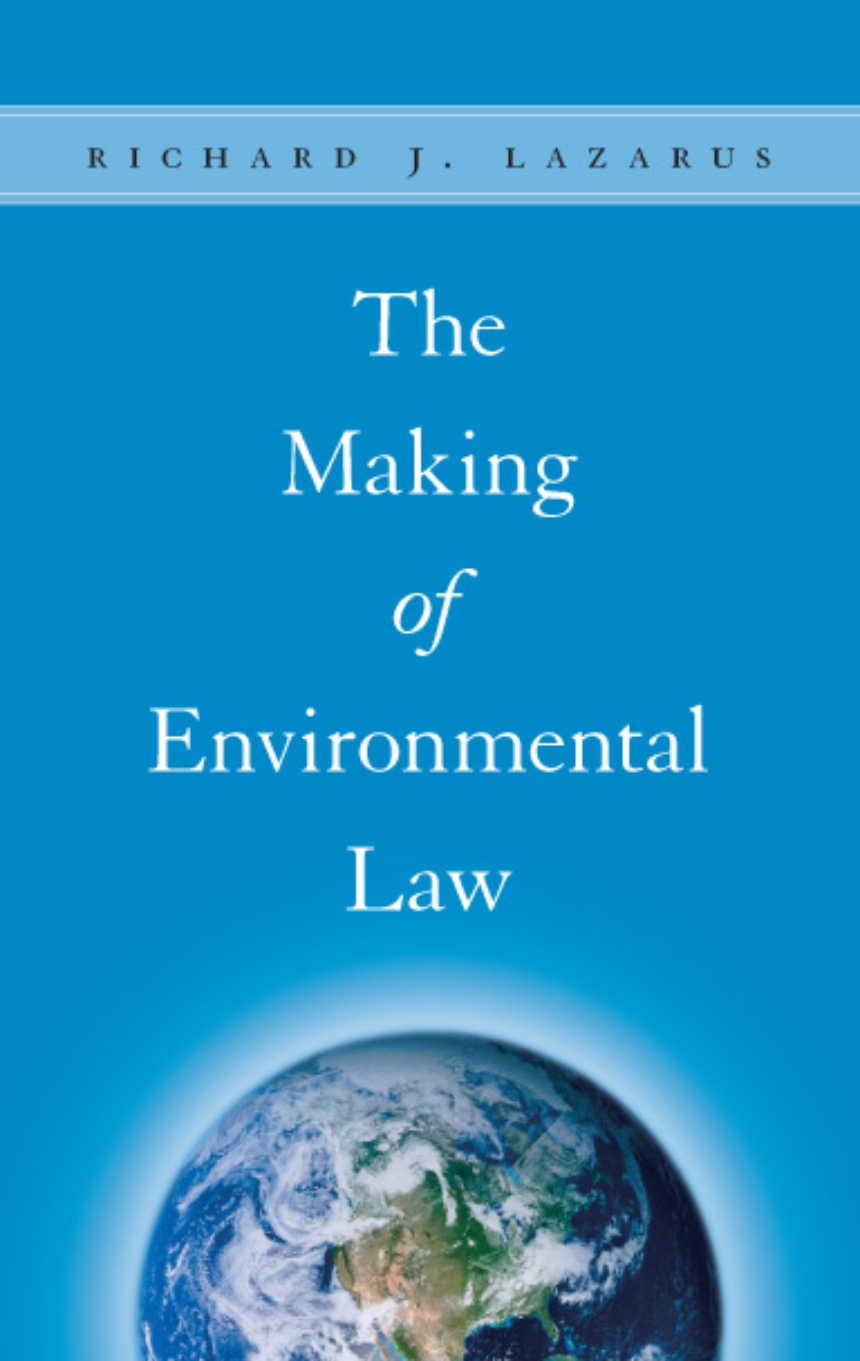The Making of Environmental Law
The unprecedented expansion in environmental regulation over the past thirty years—at all levels of government—signifies a transformation of our nation’s laws that is both palpable and encouraging. Environmental laws now affect almost everything we do, from the cars we drive and the places we live to the air we breathe and the water we drink. But while enormous strides have been made since the 1970s, gaps in the coverage, implementation, and enforcement of the existing laws still leave much work to be done.
In The Making of Environmental Law, Richard J. Lazarus offers a new interpretation of the past three decades of this area of the law, examining the legal, political, cultural, and scientific factors that have shaped—and sometimes hindered—the creation of pollution controls and natural resource management laws. He argues that in the future, environmental law must forge a more nuanced understanding of the uncertainties and trade-offs, as well as the better-organized political opposition that currently dominates the federal government. Lazarus is especially well equipped to tell this story, given his active involvement in many of the most significant moments in the history of environmental law as a litigator for the Justice Department’s Environment and Natural Resources Division, an assistant to the Solicitor General, and a member of advisory boards of the U.S. Environmental Protection Agency, the World Wildlife Fund, and the Environmental Defense Fund.
Ranging widely in his analysis, Lazarus not only explains why modern environmental law emerged when it did and how it has evolved, but also points to the ambiguities in our current situation. As the field of environmental law "grays" with middle age, Lazarus’s discussions of its history, the lessons learned from past legal reforms, and the challenges facing future lawmakers are both timely and invigorating.
In The Making of Environmental Law, Richard J. Lazarus offers a new interpretation of the past three decades of this area of the law, examining the legal, political, cultural, and scientific factors that have shaped—and sometimes hindered—the creation of pollution controls and natural resource management laws. He argues that in the future, environmental law must forge a more nuanced understanding of the uncertainties and trade-offs, as well as the better-organized political opposition that currently dominates the federal government. Lazarus is especially well equipped to tell this story, given his active involvement in many of the most significant moments in the history of environmental law as a litigator for the Justice Department’s Environment and Natural Resources Division, an assistant to the Solicitor General, and a member of advisory boards of the U.S. Environmental Protection Agency, the World Wildlife Fund, and the Environmental Defense Fund.
Ranging widely in his analysis, Lazarus not only explains why modern environmental law emerged when it did and how it has evolved, but also points to the ambiguities in our current situation. As the field of environmental law "grays" with middle age, Lazarus’s discussions of its history, the lessons learned from past legal reforms, and the challenges facing future lawmakers are both timely and invigorating.
334 pages | 2 line drawings | 6 x 9 | © 2004
Earth Sciences: Environment
Law and Legal Studies: Law and Society, Legal History
Reviews
Table of Contents
Introduction
Part I: Making Environmental Law
1. Time, Space, and Ecological Injury
2. The Implications of Ecological Injury for Environmental Protection Law
3. The Challenges for U.S. Lawmaking Institutions and Processes of Environmental Protection Law
Part II: The Road Taken
4. Becoming Environmental Law
5. Building a Road: The 1970s
6. Expanding the Road: The 1980s
7. Maintaining the Road: The 1990s
Part III: Environmental Law in the New Millennium
8. The Emerging Architecture of U.S. Environmental Law
9. Changing Conceptions of Time and Space Redux: Environmental Law’s Future Challenges
10. Environmental Law’s Second (and Quite Different) "Republican Moment"
Conclusion: The Graying of the Green
Notes
Index
Part I: Making Environmental Law
1. Time, Space, and Ecological Injury
2. The Implications of Ecological Injury for Environmental Protection Law
3. The Challenges for U.S. Lawmaking Institutions and Processes of Environmental Protection Law
Part II: The Road Taken
4. Becoming Environmental Law
5. Building a Road: The 1970s
6. Expanding the Road: The 1980s
7. Maintaining the Road: The 1990s
Part III: Environmental Law in the New Millennium
8. The Emerging Architecture of U.S. Environmental Law
9. Changing Conceptions of Time and Space Redux: Environmental Law’s Future Challenges
10. Environmental Law’s Second (and Quite Different) "Republican Moment"
Conclusion: The Graying of the Green
Notes
Index
